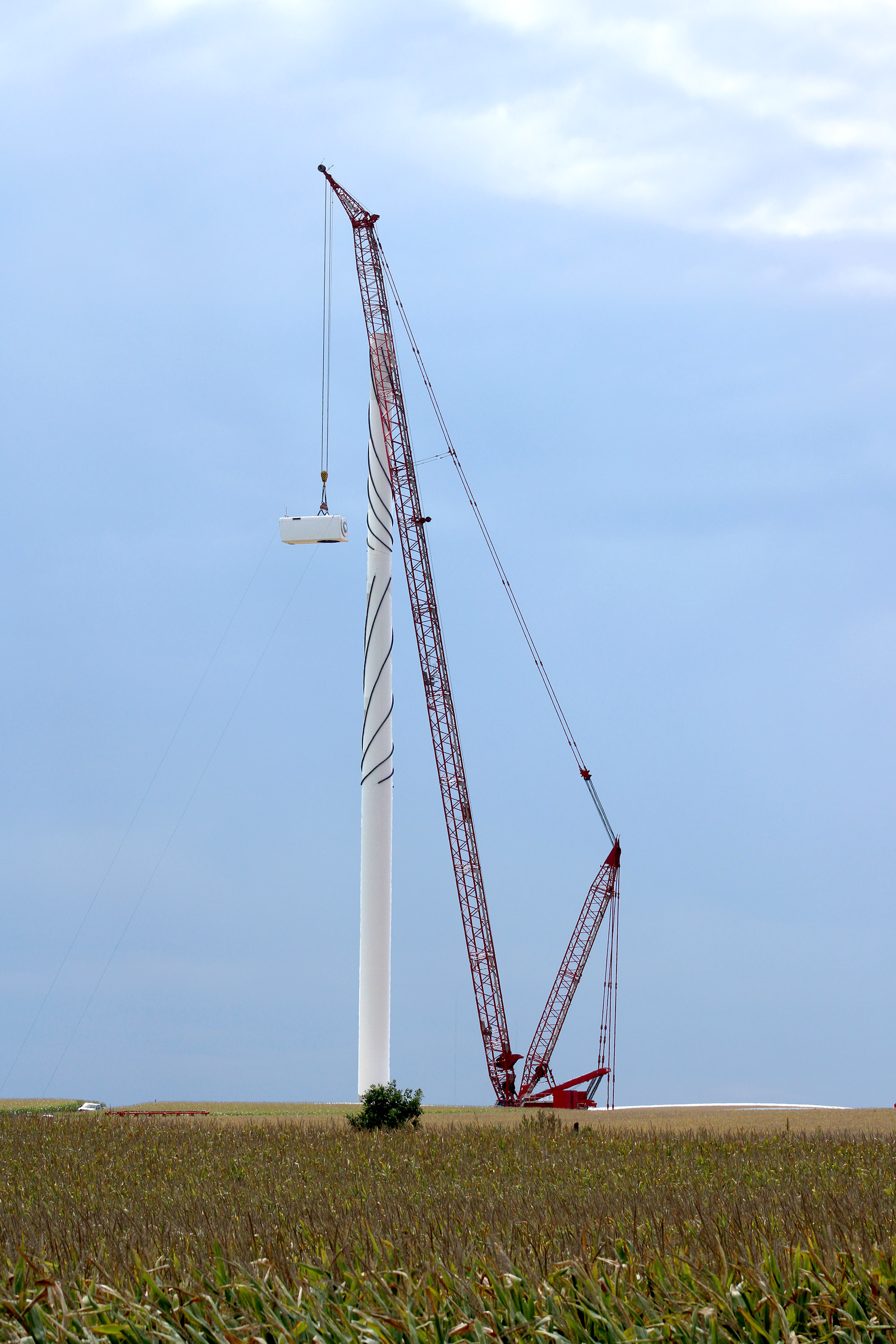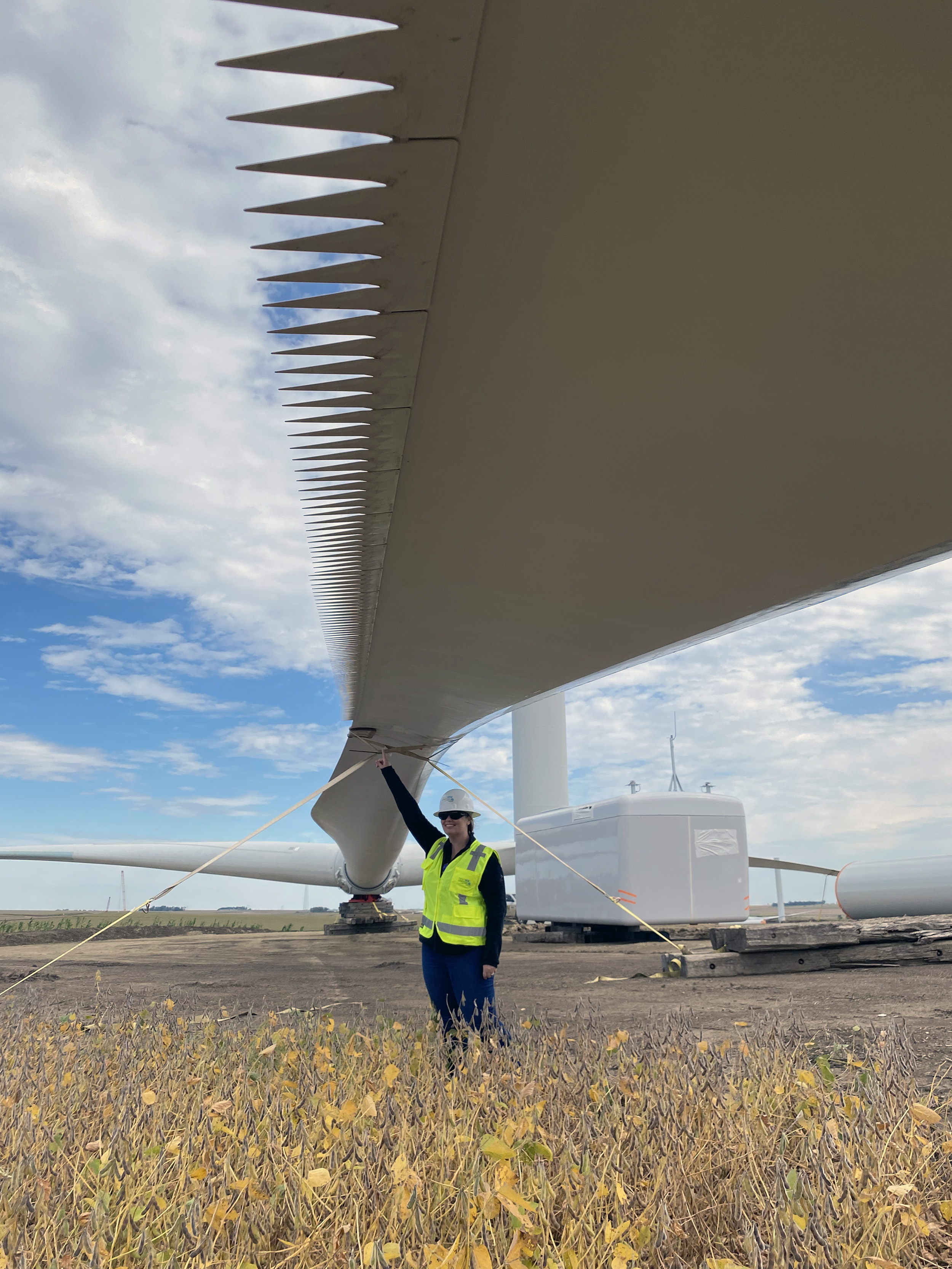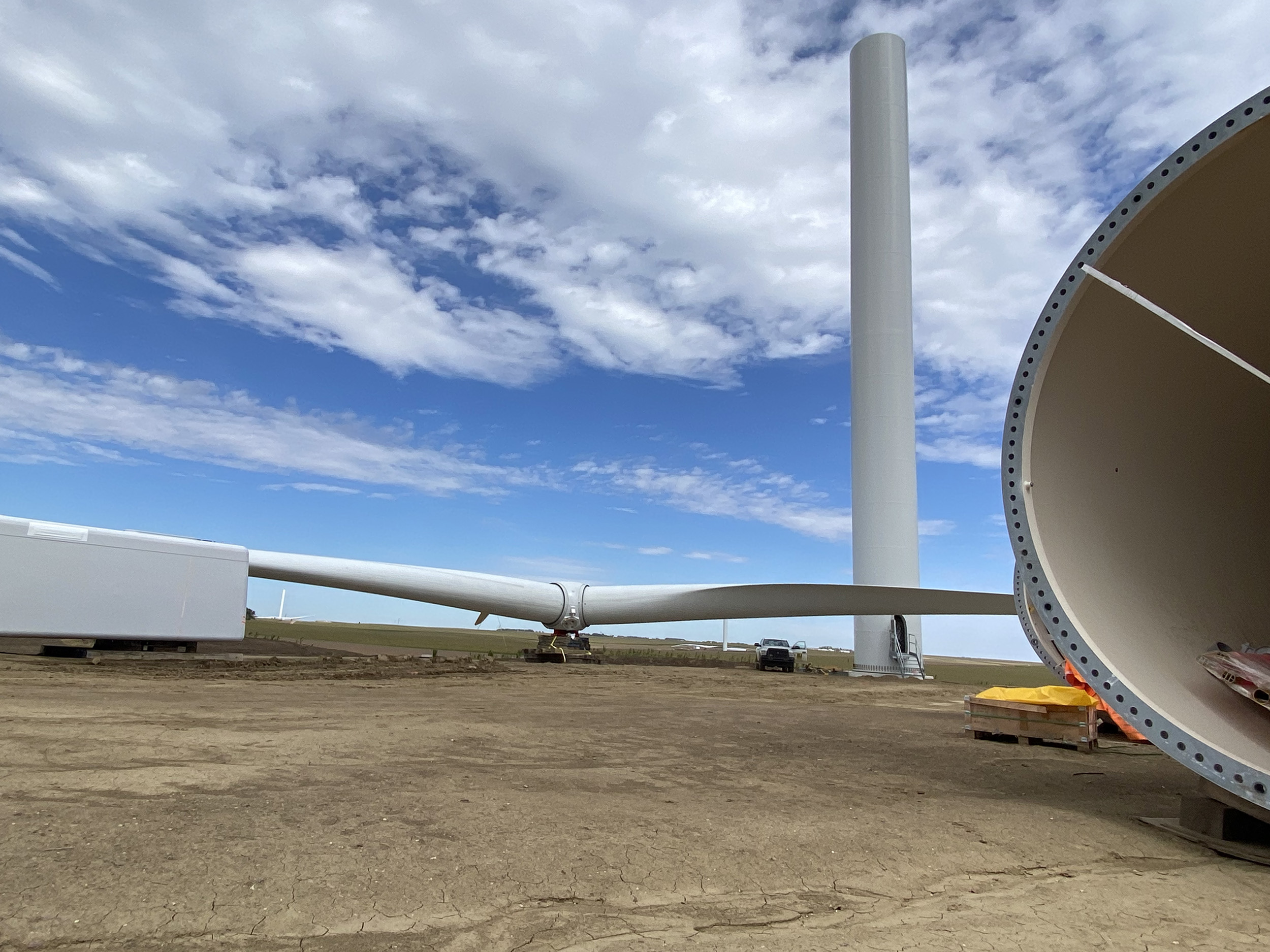 ,
,  ,
, 
The Walleye Wind Farm in western Rock County is at peak construction with three turbines now erected among a total of 40 in the project.
NextEra Energy Resources is building the wind farm capable of generating approximately 110 megawatts of energy.
On Tuesday and Wednesday, Sept. 20 and 21, NextEra hosted tours of the construction in progress for local leaders and media.
“Construction is providing a significant economic boost to Rock County and the state, creating up to 185 construction jobs, and stimulating the purchase of regional goods and services from local vendors,” said NextEra spokesperson Sarah Borchardt.
“Over the next 30 years, the project is expected to generate up to $18 million in additional revenue for Rock County.”
Laydown yard
Wednesday’s tour started at the NextEra temporary laydown yard north of Beaver Creek.
It’s where roughly 250 workers currently report for duty each day for their role in the project that’s now at its peak of construction activity.
The turbine blades, tower sections and motors are delivered directly to their respective sites, but the laydown yard houses construction trailers, hundreds of workers’ vehicles, and stored equipment, such as wire and transformers.
The 10- to 15-acre site is leased during construction and will be reclaimed back to farm ground when the wind farm is finished.
Blades, tower sections and motors:
The tower sections come mostly from Marmon Energy in Brandon, South Dakota, the nacelles are manufactured by GE in Pensacola Beach, Florida, and the blades ship from North Dakota but are manufactured in Brazil.
The 40 Walleye Wind turbines are comprised of three different sizes:
Thirty-six turbines will have a 2.82-megawatt capacity and four will have a 2.5-megawatt capacity.
The four smaller ones will be nearly 263 feet tall from the ground to the top of the hub.
Of the larger 2.82-megawatt capacity turbines, 28 of them are 374 feet tall to the top of the motor hub and eight are 295 feet.
The blades are 203 feet long, so the total height of the largest turbines from the ground to the tip of the blade is 577 feet.
Each blade has a serrated edge to reduce the “whooshing” sound associated with spinning turbine blades.
This Leading Noise Trailing Edge technology is required by the Minnesota PUC to reduce sound and shadow flicker.
A smooth blue edge on the opposite side of the blade prevents ice build-up.
The hub, is what the blades attach to. It is installed onto the machine head or nacelle, which houses the generator, gearbox and various control systems.
All this weighs roughly 250,000 pounds – or 125 tons, which makes it top heavy when turbines are under construction.
The towers are erected in sections. After the bottom two are in place, the top sections are placed with support from “vortex” wrap to direct wind around the turbine, rather than sway it back and forth.
“The tower constantly sways, even in the lightest wind,” said construction manager Allen Collier.
“The tubes that are wrapped around it prior to installation of the nacelle help to break up the wind that flows across the tower causing excess sway and possibly the tower failing.”
If wind speeds exceed 22 mph, work is halted.
Within 24 hours of erecting the top tower sections, the heavy nacelles must be placed to prevent the tower from swaying in the wind.
“If the nacelle is not placed, then the crane has to stay attached to provide support to the tower as well,” Collier said.
The vortex wrap is removed once the turbine is complete.
Blinking red lights
The turbines are equipped with blinking red lights to alert aircraft traffic of their presence.
However, they’ll blink only when aircraft is in the vicinity because they’re equipped with ADLS technology.
The Automatic Detection Lighting System operates via a radar tower precisely located relative to where the turbines are erected. It detects when aircraft is in the vicinity and triggers the blinking lights.
Collector substation
The 40 Walleye Wind turbines feed the electrical grid through buried cables that send the power they’re generating to a NextEra collector substation.
The collector substation steps it up to a higher voltage and sends it to a “point of interconnection” substation owned by Northern States Power which sends it to the grid.
The collector substation and NSP substation are located on a permanent 5-acre piece of land northwest of Beaver Creek near the operations building where the Walleye Wind technicians will work.
What happens to old turbines?
As part of the Walleye Wind construction project, the seven towers of the previous MinWind I and II project were taken down this spring.
The Fiberglas blades were crushed to a powder that was recycled into concrete potash, and the metal components were used as scrap metal.
Walleye Wind project developer Danell Herzig repowered a wind farm in Pipestone County two years ago that replaced 126 turbines with 44 newer, more efficient turbines.
“They were creative in what they did,” she said. “They were able to break down the concrete. There was demand for the crushed concrete in the local community.”
She said the scrap metal was in high demand.
“We had scrappers and salvagers begging us for the metal tower sections,” Herzig said. “We literally had bidding wars over which scrappers could come and take the tower sections away.”
She said the blades couldn’t be recycled back then because the recycling technology didn’t yet exist to crush them for concrete potash.
The nacelles were sold to developers like Elite Clean Energy who had similar turbine technology.
“We further identified a dozen wind tech schools, including Minnesota West Technical and Community College, that have wind technician programs, and we donated the nacelles to them so that kids could work on them,” she said.
Community support
Herzig said the Walleye Wind Farm construction has faced challenges with weather and permitting like many of the projects she has overseen,
However, she said Rock County’s Walleye Wind Farm has been special in significant ways.
“I have worked all over the country on these projects. People want the wind projects here, where in other areas you end up with a lot of opposition,” she said.
“I believe, having worked in this area for awhile, you guys were among the early adopters of wind energy in this country, so it’s not new and scary.”
Once operational, the wind farm will generate $400,000 to $600,000 in annual tax revenues to Rock County and provide electricity to the Minnesota Municipal Power Agency through a 30-year purchase agreement.


